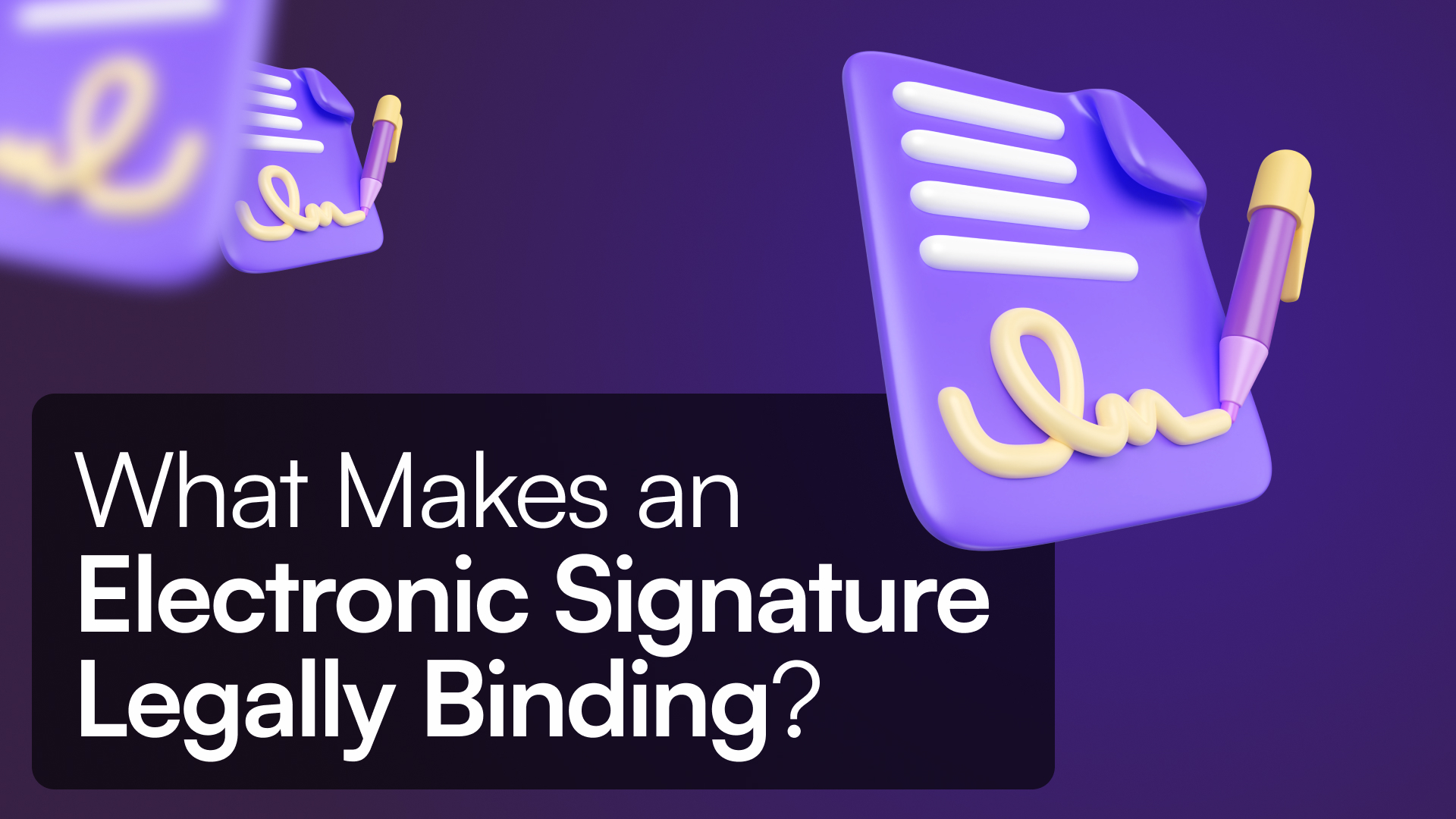Introduction
Electronic signatures have swiftly replaced handwritten ones across business operations—used in contracts, proposals, onboarding, and more. But a crucial question remains:
"Is that signature legally binding?"
The short answer: Yes, under U.S. law—and in many jurisdictions—electronic signatures can be legally enforceable. However, they must meet clear, established requirements. In this guide, you’ll discover:
-
What an electronic signature is
-
The legal standards that make e-signatures valid
-
How to implement compliant workflows in a low-code platform like Tadabase
-
When electronic signatures might not be enough
What Is an Electronic Signature?
At its core, an electronic signature is any electronic method indicating agreement or consent to the content of a document. This can include:
-
Typing one's name at the end of an email
-
Clicking an “I Agree” or “Submit” button
-
Drawing or uploading a signature image
-
Applying a digital signature (cryptographic technique ensuring identity and integrity)
These are different from digital signatures, which use encryption (like digital certificates) to verify signer identity and document integrity.
Both are legally recognized — if they meet certain requirements.
What Makes an Electronic Signature Legally Binding?
In the U.S., the ESIGN Act (2000) and UETA (Uniform Electronic Transactions Act) uphold the legal validity of electronic signatures—with similar statutes such as eIDAS in the EU.
To be enforceable, an electronic signature must meet five essential criteria:
1. Intent to Sign
The signer must voluntarily agree to sign.
Examples: Clicking a “Sign Now” button, typing a name and checking a box.
Tadabase Implementation:
Use a signature field with a required checkbox saying “I intend to sign electronically.”
Disclaimer: Tadabase provides tools to capture intent, but the enforceability depends on how your workflow is designed.
2. Consent to Do Business Electronically
All parties must agree to conduct the transaction electronically.
Best Practices:
-
Display a digital transaction consent notice
-
Log acknowledgment via checkbox
-
Offer a paper option if needed
Tadabase Implementation:
Add a rich-text consent clause + required checkbox before signature access.
Disclaimer: It’s your responsibility to configure consent capture in line with legal standards.
3. Signature Linked to the Signer
You must prove the signature came from a specific person.
Best Practices:
-
Require login
-
Capture email or name
-
Log IP address or device ID
Tadabase Implementation:
Use logged-in user records, audit logs, and metadata (IP, email, timestamp).
Disclaimer: You must ensure your method reliably ties the signature to the correct individual.
4. Tamper Evidence
Once signed, the document should not be altered without detection.
Best Practices:
-
Timestamp actions
-
Use version locking or hashes
-
Generate immutable PDFs
Tadabase Implementation:
Create PDF versions post-signature, and store signed values in audit logs or separate tables.
Disclaimer: Tadabase tools can help create tamper-evident systems, but actual integrity depends on your configuration.
5. Record Retention and Access
You must retain the signed record in a durable, accessible format.
Best Practices:
-
Use encrypted storage
-
Generate PDFs
-
Make files accessible for audits or disputes
Tadabase Implementation:
Store files in file fields or connect to external storage via automation.
Disclaimer: Tadabase allows flexible storage, but you are responsible for meeting any legal retention requirements.
Building a Legally Compliant Signature Flow in Tadabase
Tadabase’s flexible, no-code environment gives you the building blocks to meet these legal requirements. Here are top picks for each component:
| Component | Top Pick in Tadabase |
|---|---|
| Signature Method | Signature field + "intent to sign" checkbox |
| Consent Capture | Rich text clause + required checkbox field |
| Signer Authentication | Logged-in users + capture IP, email, timestamp |
| Tamper Protection | Create PDFs post-signing + audit logs |
| Record Retention | File field or external encrypted storage |
Use the following features and setup tips to implement each legal requirement:
-
Intent Capture – Add signature fields alongside mandatory "I intend to sign" checkboxes.
-
Consent – Incorporate rich-text notices and consent checkboxes before allowing signature access.
-
Identification – Tie signatures to authenticated user profiles, log emails, IP, and timestamps via workflows.
-
Integrity – Use audit logs, enforce record locking, and export finalized documents as immutable PDFs.
-
Storage & Access – Store signed records as secure attachments or file fields for durable, retrievable storage.
When Electronic Signatures May Not Be Enough
Some documents still legally require “wet” (handwritten) signatures. These include:
-
Wills and estate documents
-
Divorce or adoption papers
-
Certain court filings
If you're unsure, consult legal counsel. You can still use Tadabase to collect supporting acknowledgments and automate the rest of the workflow.
Summary Checklist
| Requirement | How to Meet in Tadabase |
|---|---|
| Intent to Sign | Signature field + agreement checkbox |
| Consent to Go Electronic | Consent notice + checkbox before signing |
| Signer Identification | Authenticated users + email/IP logging |
| Document Integrity | Timestamps, audit trails, locked or PDF export |
| Secure Retention | Encrypted or file-field storage of signed docs |
Top Electronic Signature Platforms to Consider
If you're exploring tools beyond custom Tadabase workflows, here are some top-rated e-signature platforms widely used for legal compliance:
| Tool | Best For | Key Features |
| DocuSign | Enterprise and legal contracts | Advanced compliance, audit trails, integrations |
| Adobe Sign | Document-heavy workflows | PDF integration, identity management |
| Dropbox Sign (formerly HelloSign) | Startups and SMBs | Easy setup, templates, Google Workspace integration |
| SignNow | Budget-conscious teams | Flexible pricing, mobile-friendly signing |
| PandaDoc | Sales and CRM-integrated workflows | Quote-to-signature flows, analytics |
Each of these platforms is built to meet ESIGN and UETA requirements, with configurable workflows and robust authentication options.
Conclusion
A legally valid e-signature is not just a digital scribble — it's a deliberate action, backed by consent, identity verification, and auditability.
With proper setup, Tadabase can support compliant e-signature flows. You just need to make sure your implementation aligns with legal standards.
Disclaimer: While Tadabase offers the tools needed to create legally binding workflows, the responsibility for compliance lies with you, the app builder. Always consult legal counsel to confirm your solution meets the laws in your jurisdiction and industry.








